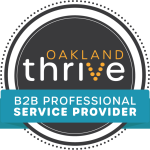When we think about marketing, our minds often jump to lead generation tactics that attract new customers. But marketing isn’t only about bringing in new business. It’s also about keeping existing customers through retention marketing.
In fact, customer retention might be even more important than customer acquisition. Let’s look at why this might be true, and how you can use retention marketing to increase revenue while spending fewer resources on marketing.
What is Retention Marketing?
Retention marketing is a strategy that markets to existing customers. It focuses on bringing back customers who have already done business with a brand and keeping customers who are already connected to a brand through a recurring subscription or membership.
Let’s look at how this retention marketing definition fits into the final stages of customer lifecycle marketing.
At the beginning of the lifecycle, acquisition marketing builds brand awareness, attracts attention, educates audiences, and eventually converts people into buyers. At the end of the lifecycle, retention marketing either brings the buyer back into the purchase funnel if they have jumped ship, or nurtures them in the cycle as an active, engaged customer.
The goals of retention marketing aren’t to increase the number of customers but rather to:
- Increase customer return rates and bring past customers back into the buying cycle.
- Decrease customer churn rates and keep existing customers in the buying cycle.
- Drive purchase frequency and get customers to enter the buying cycle more often.
A few retention marketing examples could be a paid gaming app that sends a free life to a player who hasn’t logged into the app for a few days or an online retailer who sends a previous customer a curated list of items they may like based on their recent purchase. Encouraging a customer to upgrade their service is another example of successful retention marketing.
Why Retention Marketing is a Smart Strategy
For new and growing brands, it makes sense to focus most of their marketing plans on customer acquisition. But once a brand has a solid customer base, they need to shift their strategy and put more attention into customer retention.
Without a retention plan, all of the marketing strategies in the acquisition phase are for naught. A brand may work hard to get customers, but then lose them by failing to re-engage and remarket to them. This loss of customers is a costly mistake, as retention marketing is proven to boost revenue while using fewer resources than acquisition marketing.
Keeping existing customers increases profits. It pays off to keep customers around. Increasing customer retention rates by only 5% can increase profits by 25 to 95%.
Selling to existing customers is easier than selling to new customers. Brands have a 60% to 70% chance of selling to an existing customer versus only a 5% to 20% chance of selling to a new customer.
Every time a customer buys from you, the odds that they return go up. After one purchase, a customer has a 27% chance of returning to your store. If they make a second or third purchase, that number increases to a 54% chance of making another purchase.
It costs less to attract existing customers than to attract new customers. It can cost up to 5x more to acquire a new customer than to keep an existing one.
Existing customers are likely to spend more. People who have already bought from your brand are more likely to return and spend more money when they do. Existing customers may spend up to 67% more on their purchase than new customers.
Happy, existing customers help you acquire new customers. When you have happy brand fans, they turn into brand advocates. This helps lead other customers to your business because customers often trust and take recommendations from friends.
Customer Retention Metrics
Now that you know the benefits of retention marketing, let’s look at some of the metrics you need to know to launch a customer retention campaign of your own.
Customer Churn Rate
Customer churn is the rate at which customers stop doing business with you. This number helps you see the rate at which you lose customers. You can measure churn rates over various amounts of time, but it’s most often measured on an annual basis.
Find It: (Number of Customers at Start of Year – Number of Customers at End of Year) / Number of Customers at Start of Year
Revenue Churn Rate
Revenue churn rate is the percentage of revenue you lose as a result of existing customers canceling a service with your business. This is mostly relevant to SaaS and subscription businesses, as it helps them see the revenue they lose as a result of customers deactivating their accounts. In the equation, MRR is monthly recurring revenue.
Find It: (MRR Lost From Existing Customers During Month – New MRR Gained From Existing Customers During Month] / MRR From Existing Customers at Start of Month
Repeat Purchase Rate
The repeat purchase rate is the percentage of your customers who have bought from your brand more than once. It helps you see how many of your customers are returning back to your business.
Original Source: https://blog.alexa.com/retention-marketing/



